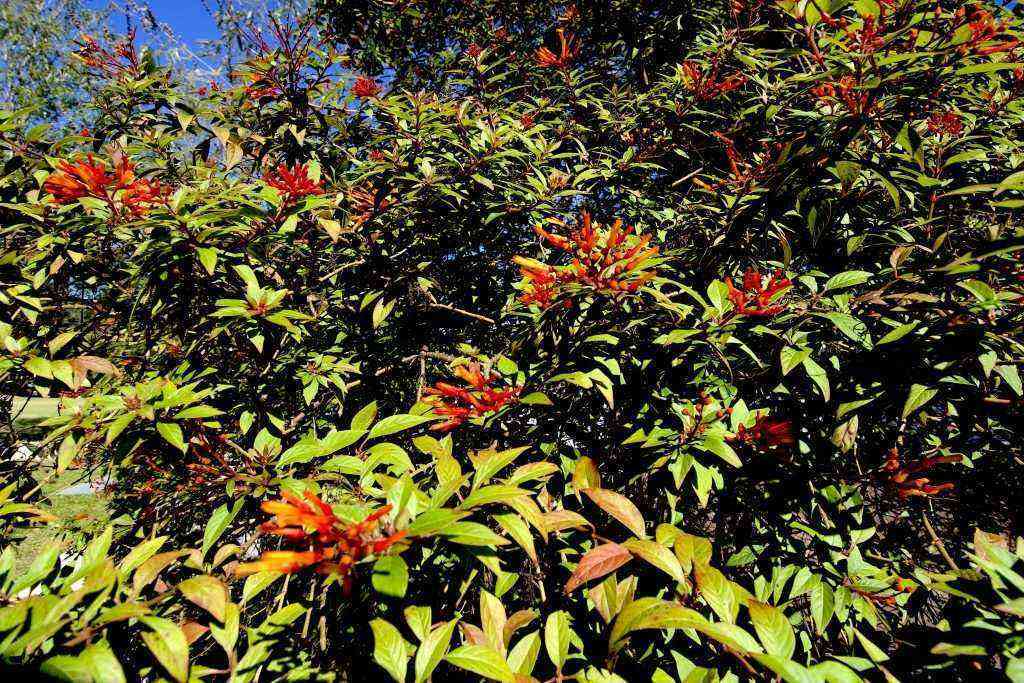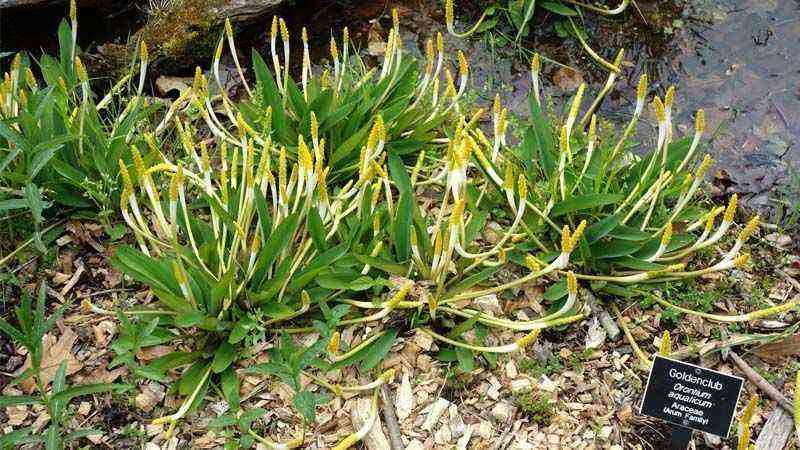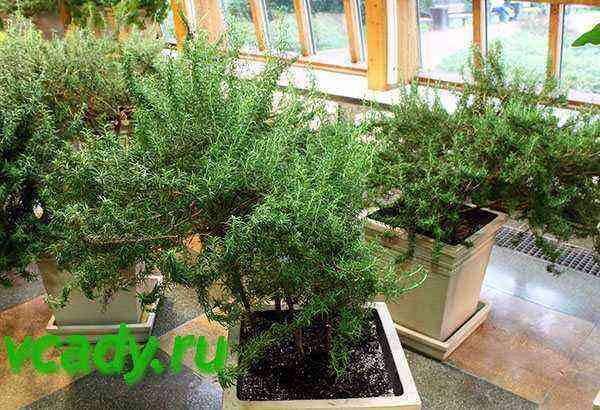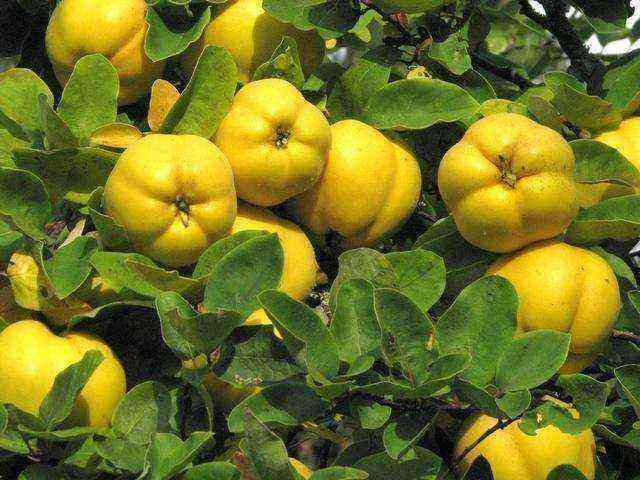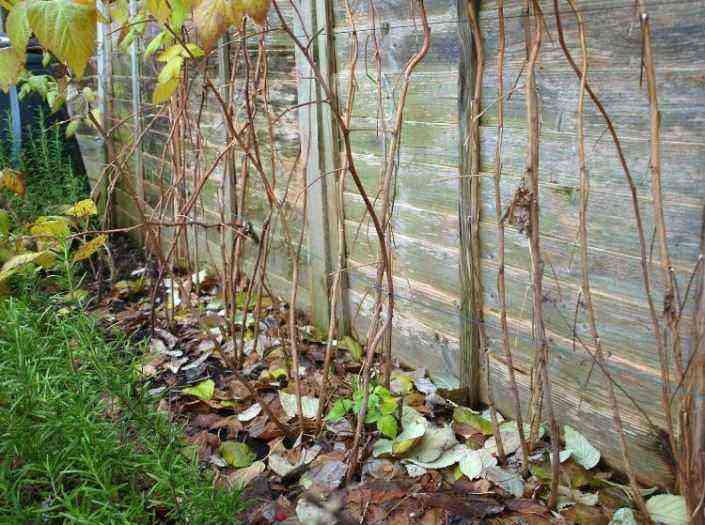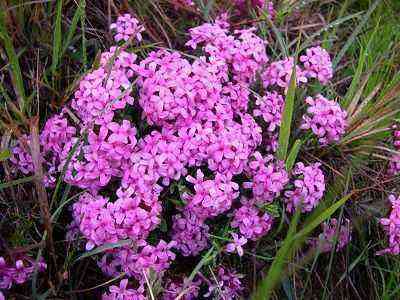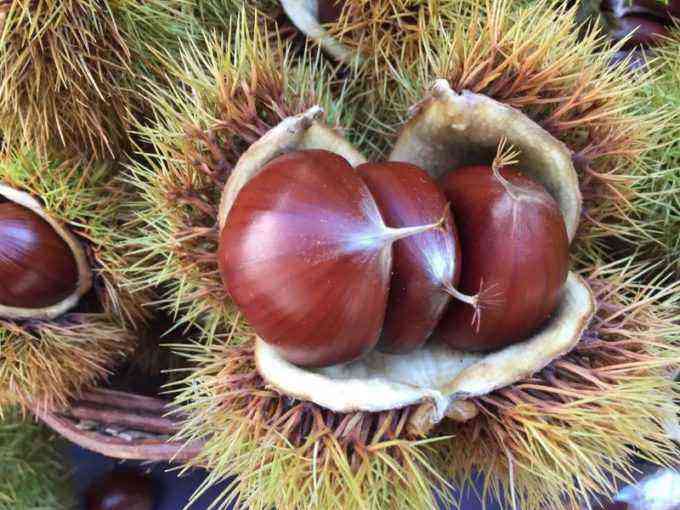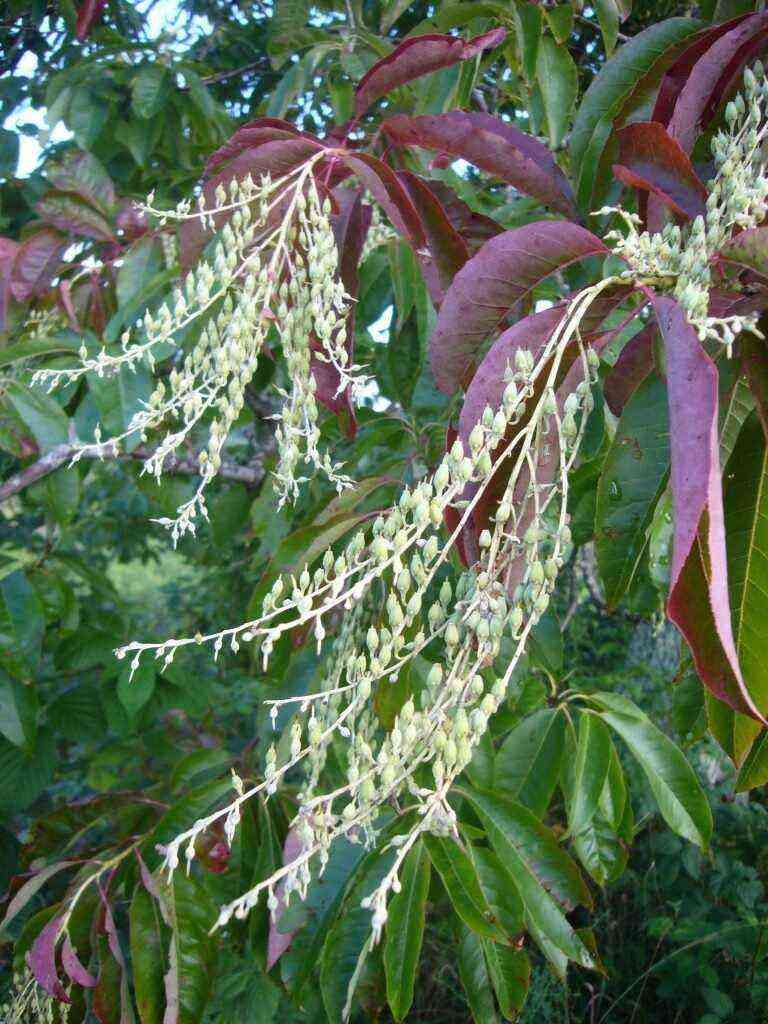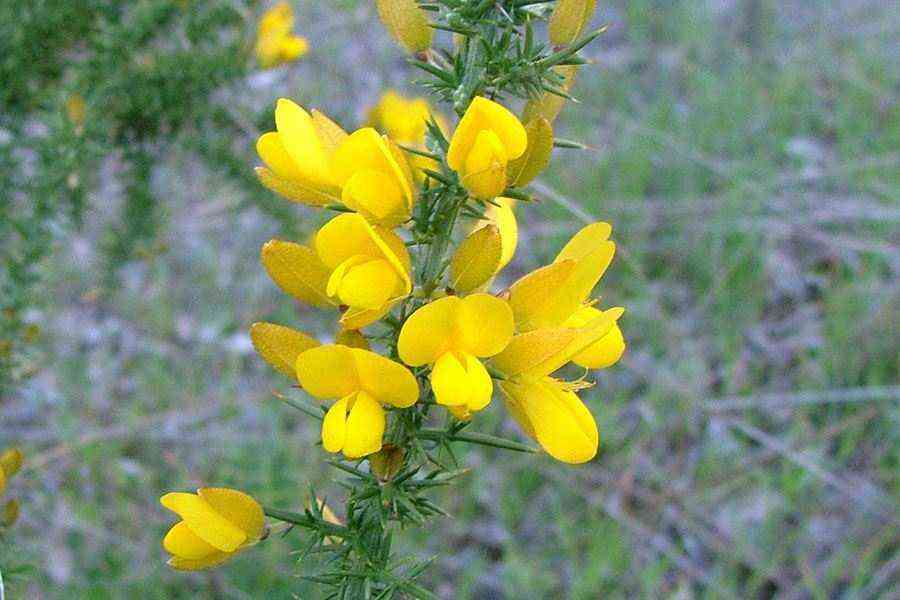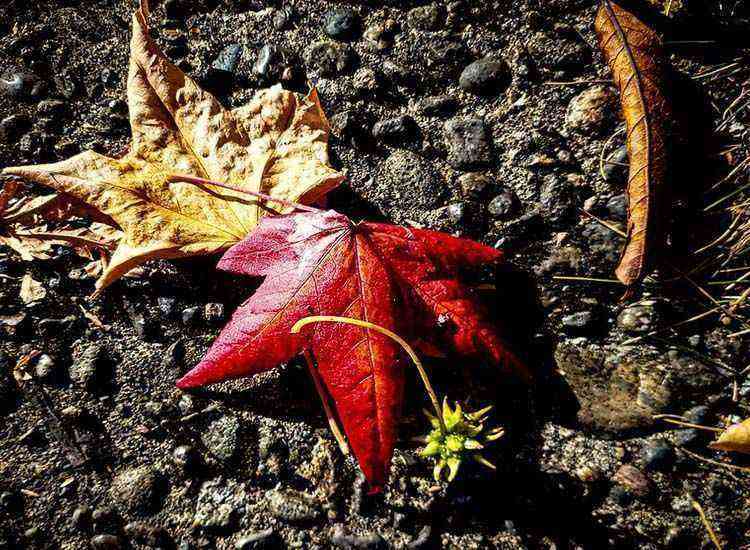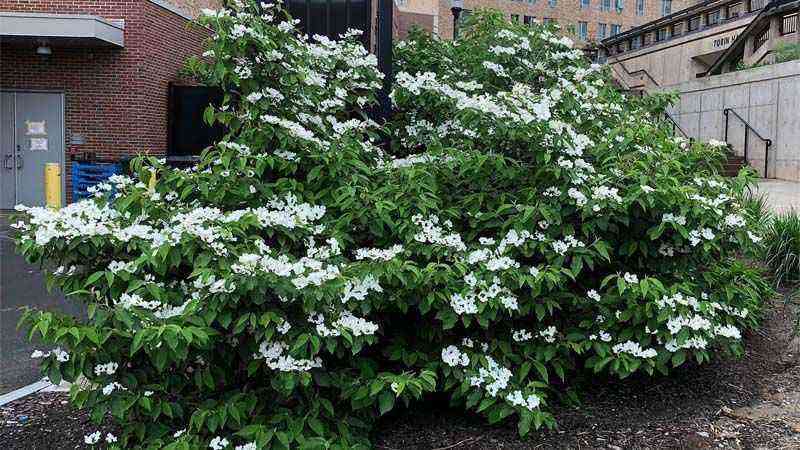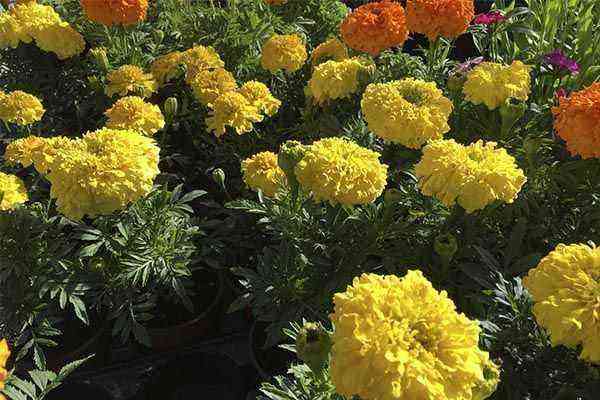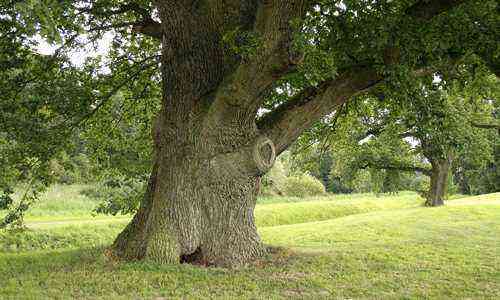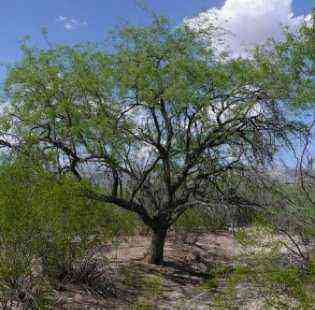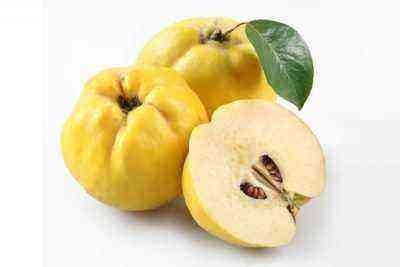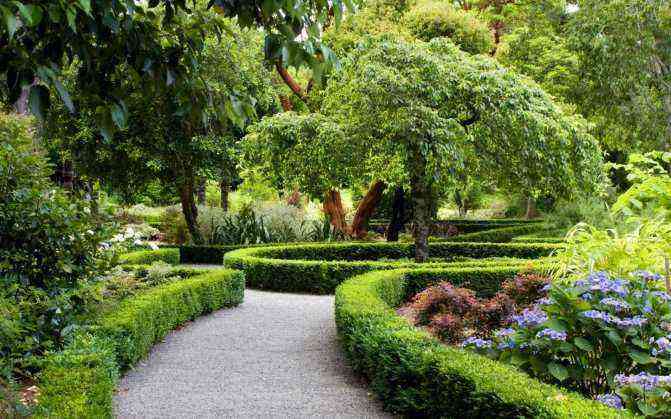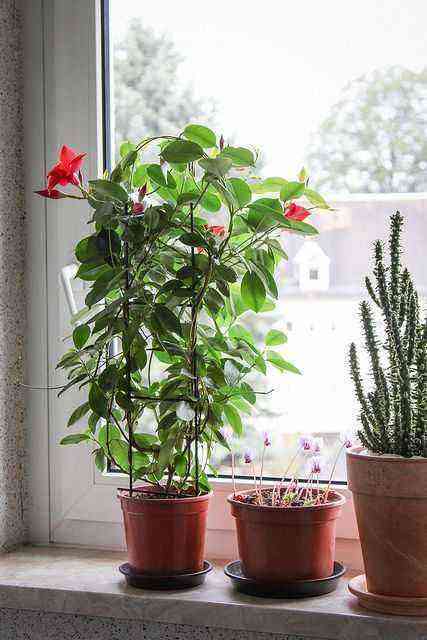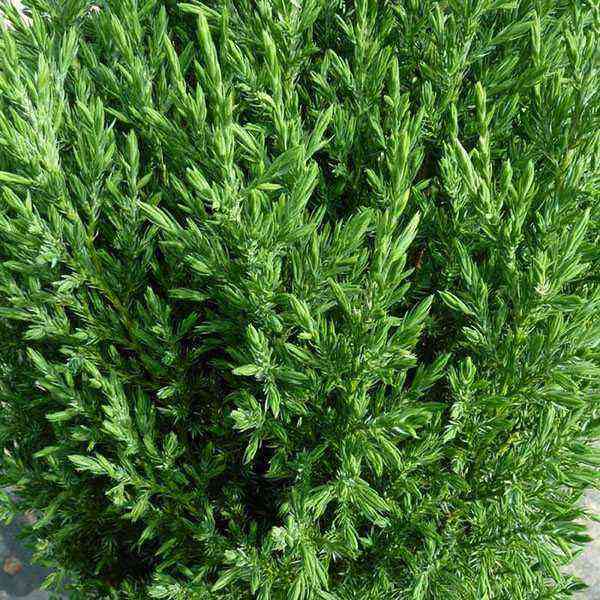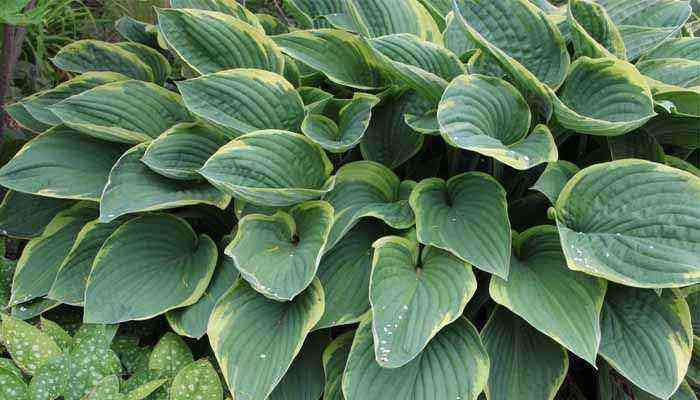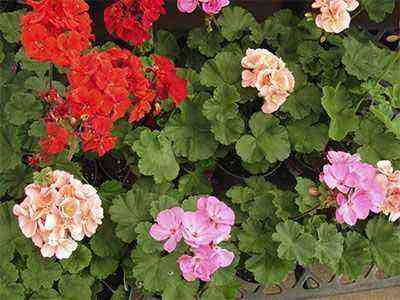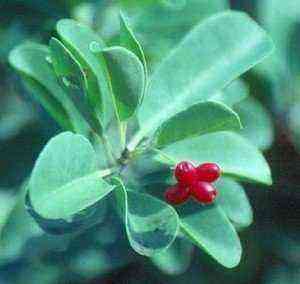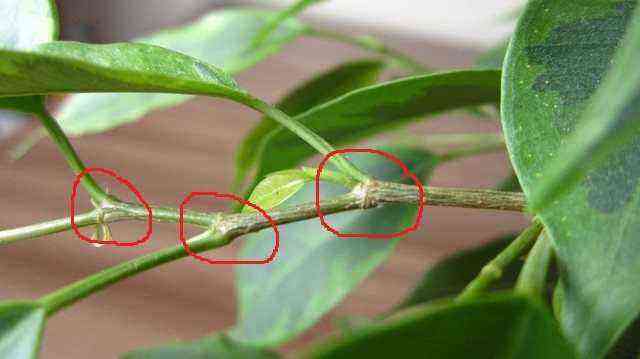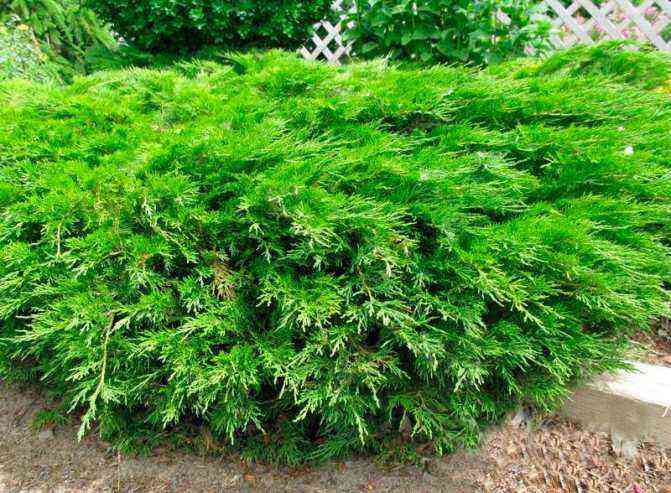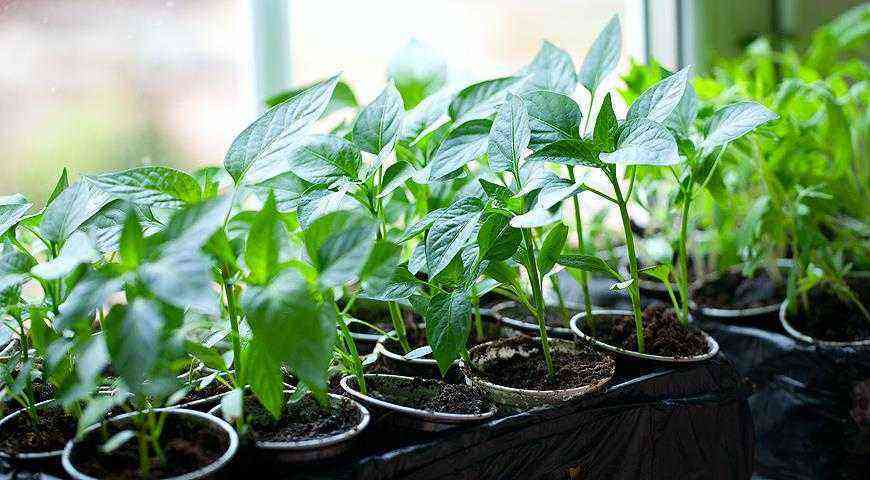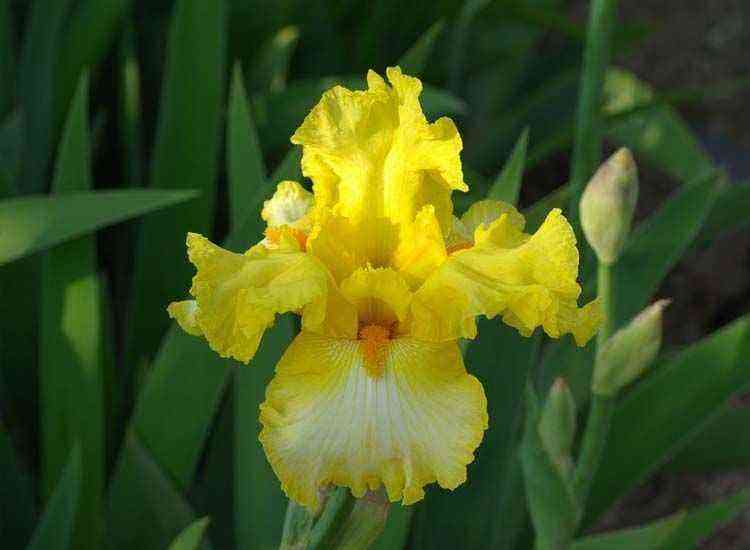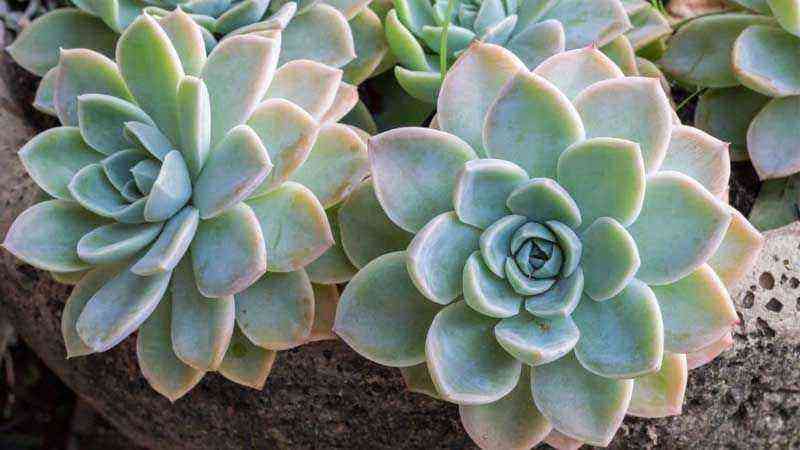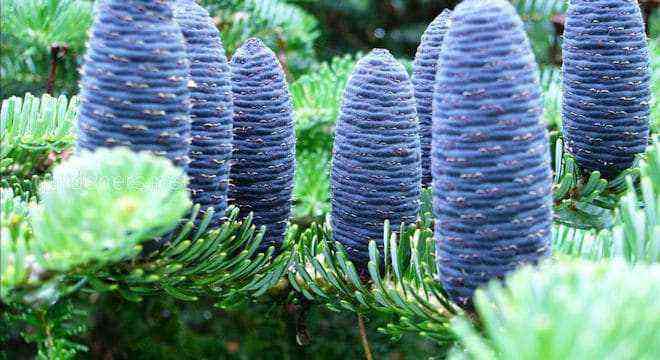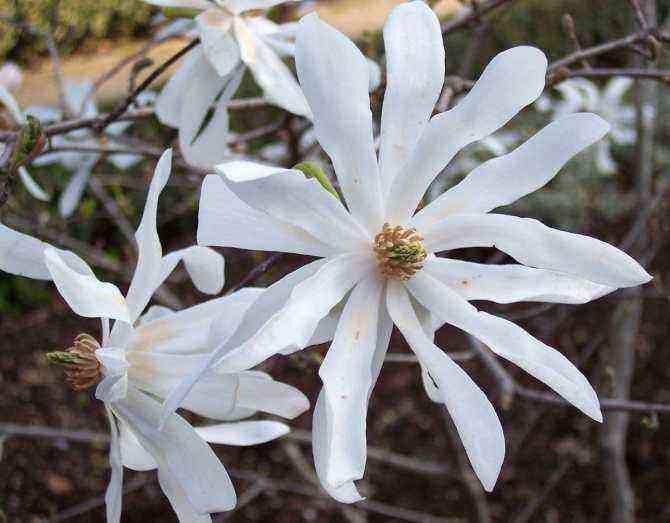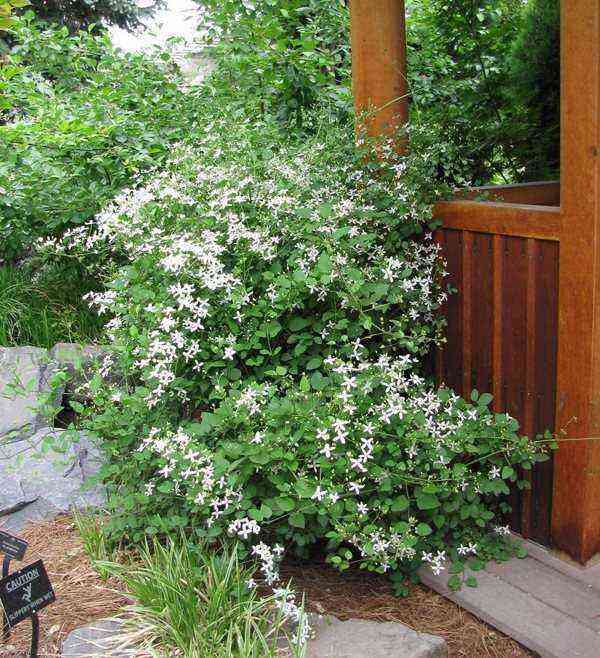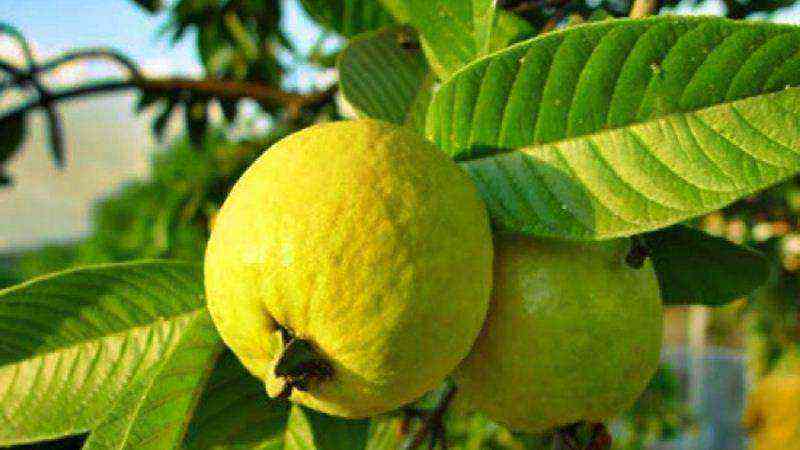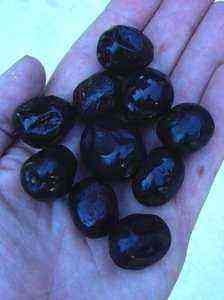According to legend, once a year, on the night of Ivan Kupala, a fern blooms, releasing a single bud, which burns with a scarlet flame, showing the lucky man who sees it the place where the treasures are buried. Therefore, the fern has been considered a mystical plant since ancient times and attracts hunters for ghostly wealth. But … the whole point is that the fern, with all its indisputable advantages, does not bloom – at all.
This mysterious fern
In this photo, not a fern is blooming, but a lily, “escaped” into the forest))
Ferns are the oldest inhabitants of our planet. They inhabited the earth long before the appearance of man. In those distant times, ferns looked like trees and were freely located on all continents of the earth, except perhaps Antarctica. Now they are cultivated for landscape decoration in the southern regions, planting them in shaded areas and well-moistened soils.
In nature, there are about 300 genera and more than 10 different fern species. Among them, there are both epiphytes (plants living on trees) and lithophytes (terrestrial plants living among rocks). The fern is a deciduous perennial with a powerful root system, and its size varies widely: from 3 cm (dwarf species) to trees that are many meters long.
Ferns are the oldest inhabitants of our planet
Fern is the only plant on the planet that does not have leaves, yes, yes! – do not be surprised! What we call leaves is a leaf plate, inside which is a whole system of branches. Fern leaf plates are scientifically called frond, which in most ferns grows directly from the root. The frond of the fern has a very decorative appearance: openwork, finely or coarsely cut, feathery, always lush and spreading. But I will not delve into the scientific subtleties, I will call the vayu fern leaves, since it is somehow more familiar))
Fern in landscape design
Nature has created a beauty that you want to admire over and over again. Ferns, with their mystical “character”, inspire designers to make the most daring decisions in landscape design. Fern in landscape design
For example, a fern of the species Marsilia four-leafed looks great on the water surface: it is planted directly into the water to a depth of 50-70 cm. The four-bladed openwork leaves of Marsilia beautifully surround the reservoir, giving it the charm of the ancient Paleozoic.
Marsilia quadrifolia (Marsilea quadrifolia)
The fern will adorn the alpine hill, giving it a very mysterious look; will be appropriate in rockeries, create a beautiful carpet in the country, and the epiphyte fern will decorate the walls of the country house or comfortably sit on the trellises.
Life cycle
Fully formed leaves live for one season. Moreover, they both perform a vegetative function and provide reproduction. And at the first frost, the leaves die. However, this is not the end of the life cycle of such an amazing plant as a female cochidian. The fern, the photo of which we will give in the article, scatters the ripe pores in August-September, from which the gametophyte grows in the same autumn. It is a haploid, multicellular phase in a plant’s life cycle.
Gametophyte develops from spores and produces germ cells. Outwardly, it is heart-shaped and does not at all look like a future plant. However, this small creeping plant can survive any conditions and turn into a beautiful fern in the spring. This is how the female kochedzhnik reproduces. The pollen and the pistil are contained in one spore, which matures and transforms into the bud of a new plant. That, in turn, undergoing stratification and hardening over the winter, grows in a new warm season and becomes a lush bush.
Fern planting
All fern species love shaded areas and moist soils. If you have shaded areas in your dacha where other plants feel uncomfortable, plant a fern there, it easily tolerates conditions unfavorable for other plants and poorly fertilized soils. All fern species love shaded areas and moist soils.
When planting a fern, use common sense: the distance between the planting holes and the depth of the holes are based on the size of the plant in adulthood. When planting long-rooted fern species, either assign them large areas (as they can greatly pressurize their “neighbors”), or make an artificial limitation of the area for them.
A little more detail about the view
To date, the female kochedyzhnik (the photo fully confirms this) is one of the most beautiful forest plants. It has a creeping rhizome covered with scales. The roots are very characteristic of the representatives of this family. They are thick, black and dense.
Leaves are what sets the female fern apart from all the rest. Tall, lacy and weightless, they are like a green spider web, pleasing to the eye. Sterile leaves almost do not differ from fertile ones, and from the moment the plant ripens, they are all spore-bearing. There are many beliefs about the flowering of this amazing plant. However, we hasten to disappoint you. It doesn’t bloom. But the leaves are very graceful and decorative, for which the plant fell in love with gardeners. Moreover, they perform a number of functions.
Reproduction of fern
Reproduction of fern
Fern propagation by spores
Fern is an asexual plant that does not have flowers and seeds, but reproduces in nature disputes… On the lower part of the leaf of an adult plant, small tubercles are visible – these are the “containers” with spores. Fern spores
For fern propagation by spores:
- In autumn, the “containers” are cut off together with a part of the sheet and placed in paper bags for drying.
- At the end of January, spores are sown in boxes with a soil substrate: peat (2 parts), leaf earth (1 part), sand (1 part). Fern spores are a fine powder, which is poured onto the soil surface in a thin layer without sprinkling it with earth, then moistened from a spray bottle, the boxes are covered with glass and placed in a warm room.
- Disputes usually germinate in the 2nd month after sowing, then the glass should be removed in order to provide the “kids” with air flow. During this period, the embryos look like a thin layer of moss.
- But when the closure of several specimens into single plants appears in the “moss”, then they should be planted in separate pots 7-8 cm high and 10-12 cm in diameter.
This way, by spring, you will have fern seedlings ready to be planted outdoors.
Fern propagation by dividing the bush
Long-rooted ferns (ostrich, bracken) are easier to propagate bush divisionrather than disputes. The division of the bush is usually done in early spring, after the end of the spring frost.
Fern propagation by rhizome mustache
Some fern species (nephrolepis sublime and cordifolia) have aboveground rhizome whiskers, from which young shoots grow. Sublime nephrolepsis (Nephrolepis exaltata)
The mustache should be dug into the soil to a depth of 8-12 cm and thoroughly spill the earth with water.
Fern propagation by brood buds
On the leaves of some species of ferns (kostenets, mnogoryadnik) are formed brood budsfrom which young plants (“babies”) subsequently develop. Hairy bone (Asplenium trichomanes)
“Children” should be separated from the leaf, placed on a damp peat moss surface, covered with a glass jar and the seedlings should be placed in a warm, shaded place in the house. “Children” quickly take root, and after 2-3 weeks they can be safely planted in open ground.
Landing
- You can plant a kochedzhnik in open ground in autumn and spring. The optimum soil temperature is not lower than 15 ° C.
- In spring they are planted from mid-May, in autumn – in September, before the start of frost.
- Prepare a hole about the depth of a shovel’s bayonet, up to 30-45 cm. Make sure that it is spacious enough so that the roots can be gently straightened out.
- Make sure that the growth point after planting is not deepened, the maximum excess can be 1 cm, and only because the soil will settle over time.
- Water gently at the root to keep the soil well moistened, but do not flood. Then cover the surface of the hole with dry grass or leaves to create a natural environment. So the moisture will remain in the ground longer, and the structure of the mail will be similar to the “native” one from the forest.
Care of the fern
Fern care is not at all problematic. In autumn, the plant is mulched, sprinkling the bushes at the base with stale sawdust or withered foliage to a height of 3-5 cm. In spring, mulch is not removed. Before wintering, the fern leaves do not need to be cut off, the spring shoots will “clog” the withered leaves, and the plant will again take on its decorative appearance. In early spring, feed the fern with organic and / or complex fertilizer, and water in a drought – that is, in fact, all care. Winter-hardy fern species, such as ostrich, bracken, kochedyzhnik, do not need to be sheltered for the winter – they are winter-hardy varieties and perfectly tolerate severe winters, but more thermophilic fern species – golokuchnik, shitnikov – require winter shelter.
Basic rules of care
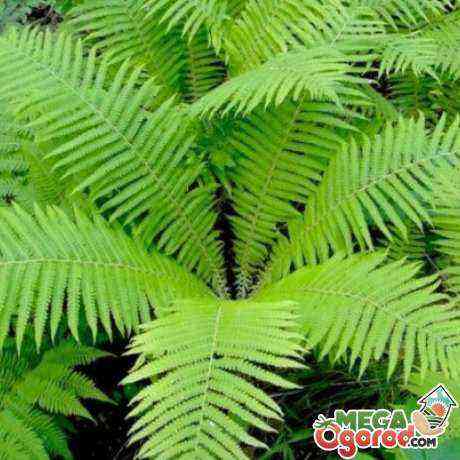
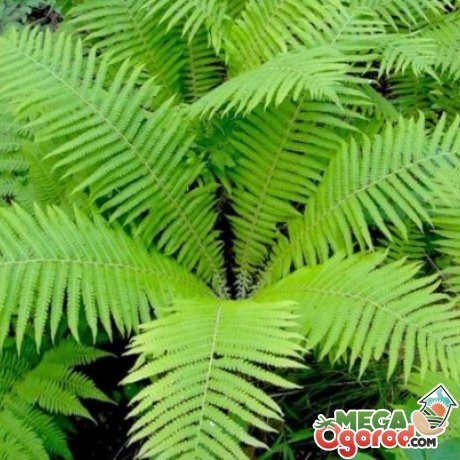
Kochedzhnik is perhaps the most unpretentious plant that does not require special care. Already from the second year, the kochedzhnik is practically not susceptible to pest attacks and tolerates winter well. The only thing that can help you survive the winter more comfortably is pruning dead leaves and mulching the soil around the plant.
Kochedzhnik loves shade, so you should not plant it in a brightly lit area.
Otherwise, the fern will stop growing and become completely unsightly. The soil should be fertile enough and good oxygen permeability. You need to feed the plant only if the soil is very depleted. Kochedzhnik does not like sudden changes in temperature and strong gusts of wind, as he is able to break the stems of the plant. The fern does not require frequent transplants, it is enough to do it once every 15 years.
Pests and diseases that can be attacked by a cochiner:
- Fungal diseases that cause leaf spot. As a rule, they can be saved from them with the help of fungicides.
- Slugs that can eat the leaves of the plant. The most effective method of pest control is manual collection and mulching of the soil with coniferous needles.
Fern species
Do not count all the types of fern, which sometimes differ very much both in appearance and in preferred conditions. I will mention a few.
Common ostrich
Common ostrich also called “ostrich feather”, as its feathery leaves, reaching 1,5 m in height, resemble the openwork lattice of ostrich feathers. Common ostrich (Matteuccia struthiopteris)
In spring, the leaves of the ostrich are wrapped in a kind of cocoon, and with the onset of warm days they fluff up and form a luxurious funnel.
In spring, the leaves of the ostrich are wrapped in a kind of cocoon
The root system is located vertically, so the ostrich needs periodic loosening and autumn mulching of the soil.
Orlyak ordinary
Common bracken is a low (up to 70 cm) fern, perfectly adapted to dry and poor soils. Its long horizontal leaves resemble eagle feathers (hence the name), the rhizome is horizontal, highly branched. Common bracken (Pteridium aquilinum)
Bracken is poisonous to pets, but completely harmless to humans.
The woman’s kitten
The woman’s kitten has strongly dissected leaves, collected in bunches. The size varies from 30 to 70 cm, depending on the variety. Female kochedyzhnik (Athyrium filix-femina)
The rhizome is short and thick, and the spore-bearing “containers” are covered with a beautiful velvet cover. The female kochedzhnik is a long-liver; he is able to live in one place without a transplant for more than 10 years.
Kochedyzhnik nipponsky
Nippon Cochiner (Athyrium niponicum) notable for the shade of the leaves – silvery-gray, with reddish veins. He prefers shade, but in order for his veins to appear brighter, he needs at least a little sun – better than morning. Propagated by root suckers. When propagated by spores, varietal characteristics are not preserved. Nippon kochedzhnik “Piktum”
Many fern species have medicinal properties, and some can be used to make delicious meals. To do this, use young shoots of fern – rachis, after boiling them for 10-15 minutes. What delicious fern dishes do you cook?
The use of kochedyzhnik for medicinal purposes
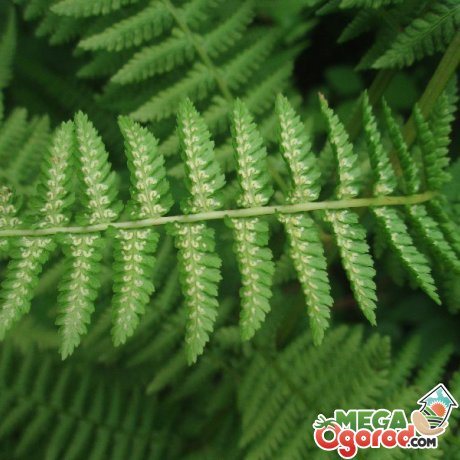

How can you use kochedyzhnik in folk medicine:
- The decoction and baths with its addition are used to treat childhood epilepsy.
- For gastrointestinal disorders, a decoction is also taken.
- In addition, it is good for flu, bronchitis and nephritis.
- Tincture of kochedyzhnik on alcohol is used for uterine bleeding.
- A decoction of the rhizomes of kochedyzhnik is used as an antihelminthic agent.
There are several nuances that you should pay attention to before using:
- Since the components in the kochedyzhnik are fat-soluble, the simultaneous use of the drug and fatty foods can cause overdose and poisoning.
- Poisoning proceeds with the following symptoms: nausea and vomiting, abdominal pain, dizziness, decreased visual activity.
- It is categorically contraindicated for pregnant and lactating women to consume kochedzhnik.
At the first symptoms of poisoning, you should immediately consult a doctor.
Gorgeous small fern
The female kochedyzhnik “victoria” is another excellent representative of its class. The maximum height is up to 100 cm, so it can be used to decorate tight, small corners of the garden. The leaves are large, delicate, light green. And the petioles of this species are yellowish or reddish. The leaf plate is double or triple pinnately divided. The fronds are not wintering, but the roots will calmly endure the cold period and will release new leaves by the beginning of next summer.
This is the most unpretentious fern for shady gardens and normally moist soils. It will not grow on sandy areas. “Victoria” is a low variety with narrow leaves. Their narrow feathers are directed alternately up and down, due to which regular chains are formed on both sides of the leaf axis. This is a great option for shady flower beds, which can be supplemented with hosts and cereals.
Varieties
What can be a female kochedyzhnik? The description would be incomplete, if not to say that in nature this plant is very variable. Species can vary in shape, size and density of leaves. More recently, about twenty varieties could be counted. Then this material served as the basis for hybridization. If today we count the hybrids, including hybrids and varieties of the female fern, which were found in nature or in culture, then you get about 300 varieties. Today we will not talk about everything, but we will try to mention the most popular, beautiful and easy to care for.
Kochetyshnik


| 1. Growth temperature: moderate to warm content at 18 to 20 degrees Celsius. The flower does not like intense heat. |
| 2. Lighting: Kochedzhnik is grown in partial shade and does not like direct sunlight. |
| 3. Watering and humidity: Keep the soil evenly moist, but not waterlogged, at any time of the year. Air humidity is high. |
| 4. Features: for growing ferns, high air humidity and timely watering are important. In the course of sanitary pruning, it is necessary to prune old yellowed frond plants at the base. |
| 5. Ground: a nutritious, organic-rich substrate with a loose texture and good drainage and a neutral or preferably slightly acidic pH. |
| 6. Additional fertilizing: application of mineral fertilizers for flowering plants 2 times a month in spring and summer. Fern is practically not fed in autumn and winter. |
| 7. Reproduction: spore cultivation, rooting of small daughter plants. |
Botanical name: Athyrium.
The periwinkle plant is a family… Asplenievye.
Origin. Australia.
Description. Kochetyshnik – a stunningly beautiful, lacy herb – a fern with delicate, curved, feathery fronds. Fronts are triangular, up to 50 cm long, bright green, silvery, bronze or purple. One of the most attractive fern species. The rhizome is small, covered with scales, creeping.
Height… The length of wai indoors is up to 50 cm.
Keep the fern pot away from direct sun and drafts, provide adequate moisture and the plant will look quite healthy. The old outer branches of the cochidian may turn brown – this is normal. You can trim them at the base to keep the plant neat. In the summer, you can take it out into the fresh air.
↑,
2.3. Reproduction – a cochiner from seeds
Small daughter plants often appear on fronds of this fern, which are planted in separate pots. Disputes, but often only specialists can do it.
↑,
2.4.Soil
On the basis of peat with the addition of perlite.
2.5 Growing conditions – temperature
The ideal range is 18 – 20º C, not lower than 5º C in winter. The hot summer weather can be tolerated by the kochedzhnik only with an adequate increase in humidity.
↑,
2.6 Potted Lemon – Light
Moderate light without direct sun, rotate the cabbage pot regularly to keep the plant symmetrical and bushy. Leaves can get sunburn if exposed to direct sunlight.
↑,
2.7 Fertilizer
Feed half strength liquid fertilizer every 2 weeks in the spring and summer to stimulate new growth and healthy leaves.
↑,
2.8 Spraying
Place the pot on a tray with damp stones or use a humidifier if the humidity in the room falls below 50%.
↑,
2.9.Life
Keep the soil evenly moist. Water the plant so that no water gets into the outlet. Reduce watering in winter. Avoid stagnant water at the roots – it can cause decay. For irrigation, use softened water at room temperature – for example, bottled, rainwater, thawed. To reduce hardness, ordinary baking soda can be added to tap water – a teaspoon per 2 liters of water.
↑,
2.10 Transfer
You should not change the pot very often, since the root system of the fern is small. Adult plants are transplanted every 2 years, young plants – every year.
2.11 Diseases and pests
Do not use insecticides as the delicate leaves are easily damaged by chemicals. Dry air and lack of moisture cause the leaves to turn brown. Pale leaves and stunted growth signal a lack of nutrients.
Harmful insects are extremely rare in attacking the cochidian, sometimes mealybugs and spider mites appear. When kept outdoors in warm months, slugs and snails can attack the fern.
Insects are pests
| Insect name | Signs of infection | Control measures |
| Mealybug or felt | The surface of the leaves and shoots is covered with fluffy, cotton-like white bloom. Plants lag behind in development | Folk remedies: spraying with soap and alcohol solution. Infusion of tobacco, garlic, cyclamen tubers, alcohol treatments, pharmaceutical tincture of calendula proved to be good. Chemicals: green soap solution, Actellik, Fitoverm. |
| spider mite | Unobtrusive spider webs on the leaves, yellowing and falling foliage with extensive lesions. The surface of the sheet plates becomes dead and covered with small cracks. Plant development slows down. | Folk ways… Plants can be rinsed in the shower and left in the bathroom in a humid atmosphere for half an hour. Irradiation with an ultraviolet lamp every week for 2 minutes. Chemicals based on pyrethrum, sulfur powders, Fitoverm, Actellik. |
| Snails, slugs | Through holes in leaf blades, traces of mucus on the surface of the leaves. | Folk ways: manual collection of harmful insects, dusting plant leaves with mustard and hot pepper, wood ash mixed with baking soda, tobacco dust. Chemicals: superphosphate granules, copper preparations, Thunderstorm, Slime-eater, Antislice, Meta. |
2.12 Purpose
A fairly compact, but very decorative fern.
Note.
Hydroponics.
3.1. Nippon blackberry – Athyrium niponicum
An evergreen fern, the height of which ranges from 30 to 45 cm. The plant has an underground, creeping, thick rhizome. The ground part of the plants is represented by wide, triangular, multiple dissected fronds, often painted in unusual shades. Vayi can be green, silvery blue, purple and even pink.
↑,
3.2. Nippon Blackberry Ursulas Red – Athyrium niponicum Ursulas Red
Bright evergreen fern from 15 to 45 cm high. Fronds are wide, triangular, up to 45 cm long, soft, repeatedly dissected. The color of the plant is unusual and very attractive – the edges of the leaves have a silvery-blue or pinkish tint, while the center of the wai is colored deep purple, burgundy or brown.
↑,
3.3 Athyrium Japanese
Evergreen decorative deciduous ferns, reaching a height of 30 – 45 cm. Airy, light, soft fronds, reaching a length of 35 – 40 cm, repeatedly dissected. The color of wai is variable and can include green, bluish green, mint, silver and purple hues. The leaf stalks are often colored in a contrasting burgundy hue.
↑,
3.4 Athyrium sinese
Large evergreen fern with a thick, erect, short, densely covered with brown scales rhizome. The fronds are wide, triangular, reaching a length of 35 to 90 cm. Shades of wai include all tones of green, yellow, brownish, bright burgundy. Each frond carries a huge number of oblong, oval, serrated leaves with a glossy surface.
↑,
3.5. Alpine blacksmith – Athyrium distentifolium
Large, attractive, evergreen ferns with long, oblong – triangular fronds, consisting of numerous plumose leaves. Wai shades include all tones of green. The plant is very lush, voluminous, airy.
↑,
3.6.Кочедыжник «Фризелли» — Athyrium ‘Frizelliae’
Compact, evergreen ferns, reaching only 30 cm in height, are very narrow – not exceeding 2 cm in width and 40 cm in length. Each frond has rounded, serrated, glossy leaves, collected in small, alternately arranged bundles. The leaves can be colored in all shades of green.
↑,
Basic care guidelines
Since the plant is not particularly whimsical, caring for it is not difficult at all.
The soil. In nature, kochedyzhnik grows on forest moist soils rich in organic matter. Therefore, it is advisable to create similar conditions for the fern in the garden. The ideal option would be to plant the fern in natural forest soil, which can be dug up next to the growing kochedyzhniks. When planting a plant, organic matter (for example, manure) can be added to the planting hole.
Care also includes regular weeding, since the plant does not tolerate turf. If the fern once dries up for the winter, it will no longer appear with the onset of spring due to the grass. Do not plant aggressive ground covers such as periwinkle, saxifrage, etc., which are characterized by rapid spreading and seizure of nearby territories, next to the kochedyzhnik.
Watering… Kochedzhnik is a moisture-loving plant, therefore, for good growth, it requires regular additional watering. This must be remembered. Otherwise, one day you may find a dried-up pastry in the place of a beautiful bush. Of course, the plant can recover, but the stress suffered will certainly not benefit it. After watering, remember to mulch the soil around the seedling. To do this, you can use cut grass, compost, as well as ordinary garden soil. Thanks to these simple steps, invaluable moisture will be preserved for a long time.
Feeding… Since in the conditions of the forest, the kochedzhnik grows on fertilized soil rich in natural organic matter, it is better to use approximately the same top dressing in the garden. Plants are also fed 1-2 times / season with mineral fertilizers, following the instructions for them. During the period of active foliage growth, fertilizing enriched with nitrogen is applied. Complex mineral fertilizers have been used since the end of July.
additional information
In former times, other species were also attributed to the group of kochedzhniks, which later separated into separate families – Asplenium and Dipteris.
Disputes in a kochedyzhnik begin to form only after 15 or 20 years. One bush can give about 75 thousand – 1 million spores.
Fern should be grown in an area protected from the winds.
Under natural conditions, a cochidian can grow in one place for 10 or more years.
Diseases and pests
Kochedzhnik is susceptible to fungal infections, which are characterized by spotted foliage. You can save the plant with fungicides. The delicate fern leaves were enjoyed by garden pests, in particular slugs. The best way to deal with them is by mechanical collection. In this case, it is recommended to mulch the soil with coniferous needles.
Most species of kochedzhnik are highly frost-resistant, and only a few varieties need special shelter. When buying, be sure to ask how this or that type of fern winters. If it was not possible to find out, then it is better to cut off the wilted leaves of the plant before the onset of the winter period, cover it with fallen leaves, and cover it with fallen snow in winter.

